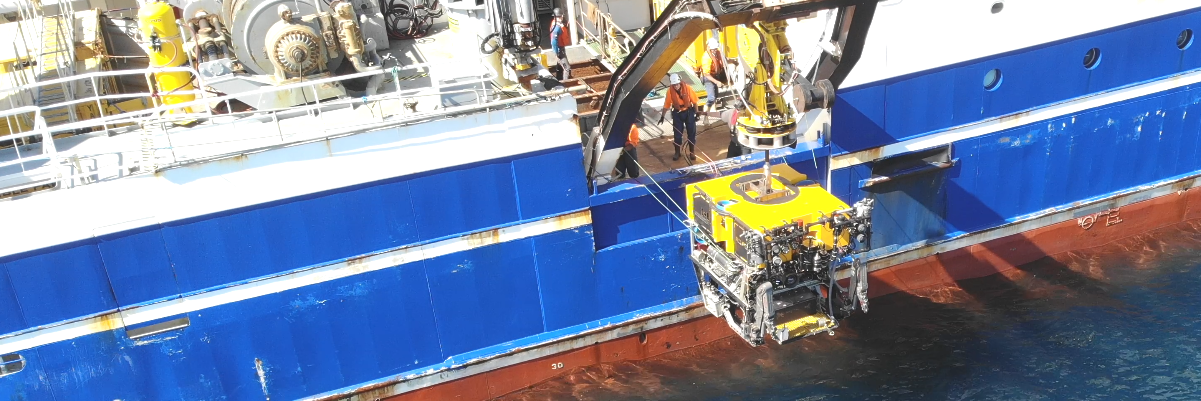NSF/GNS Expedition Summary
RV Tangaroa, March 6 – 26, 2021
In February 2021, 9 members of the CSSF team travelled from Victoria, Halifax and St. Johns to Wellington, New Zealand, to participate in an NSF/GNS funded expedition on board the NIWA research vessel Tangaroa. To meet New Zealand’s COVID requirements for entry into the country the team was quarantined for 14 days in a hotel in Wellington in advance of proceeding to the ship.
The expedition was part of a multi-year study focused on the Hikurangi subduction zone offshore the North Island of New Zealand. The purpose of this work is to advance scientific understanding of the causes and consequences of slow-slip events and large earthquakes at the Hikurangi subduction zone, ultimately contributing to the improved understanding of hazards posed by the subduction zone.
ROPOS spent 3 weeks recovering numerous instruments deployed in 2019 and downloading data from several fixed systems on the seafloor. In addition, the ROV team was tasked to find 5 lost instrument packages that were no longer communicating with operators at the surface.
Dr. Evan Solomon from the University of Washington deployed 16 osmotic samplers by ROV in 2019 at multiple locations offshore from the Northern and Southern ends of the North Island. Deployment depths ranged from a few hundred meters, to over 3,000 m. All these samplers were recovered without incident with the exception of two units, which were lost at the surface during recovery of the ROV in rough weather. Fortunately, the schedule allowed for a search and recovery dive at the same location later in the trip, during which time the lost packages were located and recovered safely.
During the expedition ROPOS visited two IODP drill holes outfitted with CORK observatories. The CORKs host a data logger and pressure sensor package at the wellhead connected to hydraulic lines conveying fluids to the sensors from hundreds of meters down the bore hole. These sensors measure changes in pore pressure/volumetric strain down the borehole, which are used to measure changes in crustal strain during offshore slow-slip events. ROPOS connected an underwater mate-able connector to each CORK and successfully downloaded over two years of data from each logger for Dr. Laura Wallace at GNS. Of particular interest was data recorded following a magnitude 7+ earthquake that fortuitously occurred only a week before the voyage left port, as well as a large slow-slip event that occurred beneath the CORKs in 2019. ROPOS also connected to two BPRs (bottom pressure recorders) at two other locations and downloaded two years’ worth of data from each.
The final objective was to visit 5 separate sites to investigate why instrument systems deployed at the surface 2 years prior were no longer communicating. These ocean bottom pressure recorders were outfitted with flotation and an acoustic release system with drop weights, and were deployed at the surface and geo-located using a triangulation procedure. ROPOS managed to locate the original positions of 4 of these systems; 1 location still had an instrument on site which was recovered, and at the other 3 sites only a drop weight could be found, indicating the packages released the weight prematurely, and drifted off. The 5th site was not visited due to poor weather.
The expedition had a few extra days at the end for some exploring, so a day was spent on Bennett Knoll, East of the central coast of the North Island, and another was spent diving in Cook Strait to investigate a major active fault (the Boo Boo Fault), and finally the last few days were spent offshore the Northeastern South Island. This final leg of the journey was focused on exploring for methane seep habitats on Kekerengu Bank. Acoustic surveys from prior voyages in the area had indicated the possibility of methane bubbles in the water column. These efforts were fruitful, with expansive, dynamic methane seep habitats found across the bank. These discoveries have expanded the researcher’s knowledge of biological and geological processes offshore of New Zealand and have contributed to several on-going projects in the region.
By the Numbers
ROPOS performance during the expedition
18
Days
Over 18 operational days, ROPOS completed 23 dives, totalling 176 hours submerged with the longest dive being 43 hours.
17
Instruments recovered
In addition to 8 years of CORK and BPR data downloaded.
103+
Samples
20 push cores, 2 gas tight samples, 27 geological samples, and 54+ biological samples collected.


